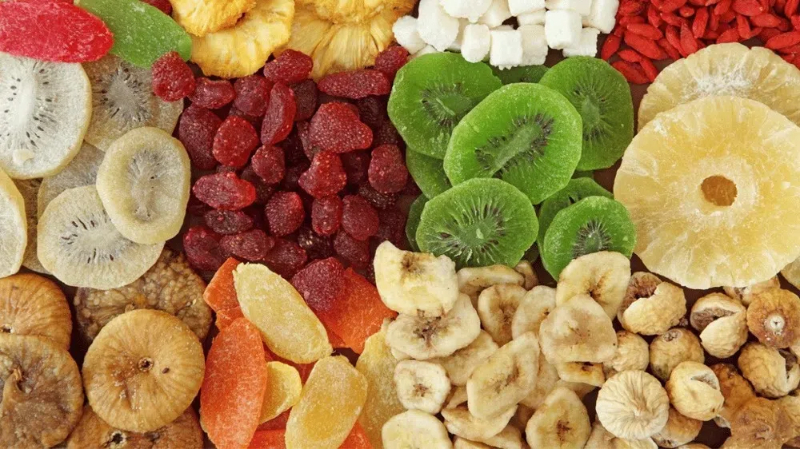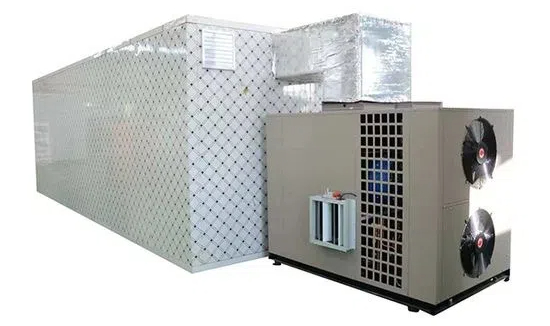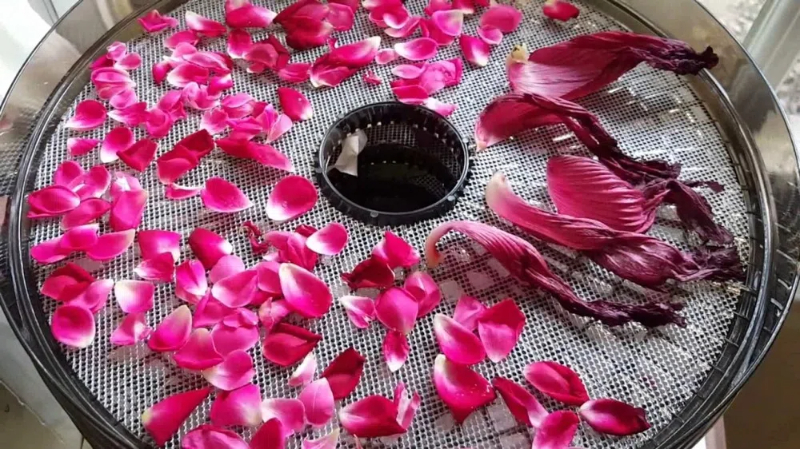
Content Menu
● Understanding Food Dehydrators
● Types of Food Dehydrators
● Key Features to Consider
● Benefits of Using a Food Dehydrator
● How to Use a Food Dehydrator
● Common Mistakes When Using a Food Dehydrator
● Choosing the Right Size
● Energy Efficiency
● Cleaning and Maintenance
● Safety Features
● Accessories
● Storing Dried Foods Properly
● Conclusion
● FAQ
>> 1. What types of foods can I dehydrate?
>> 2. How long does it take to dehydrate food?
>> 3. Can I dehydrate frozen foods?
>> 4. Is it safe to dehydrate meat?
>> 5. How should I store dehydrated foods?
● Citations:
Food dehydrators are essential kitchen appliances for anyone interested in preserving food, creating healthy snacks, or preparing ingredients for long-term storage. They work by removing moisture from food, which helps inhibit the growth of bacteria and mold. When considering the purchase of a food dehydrator, there are several key factors to keep in mind to ensure you choose the right model for your needs.

Understanding Food Dehydrators
Food dehydrators come in various designs and functionalities, but they all serve the same primary purpose: to remove moisture from food. This process enhances the flavor and extends the shelf life of fruits, vegetables, herbs, and meats.
Types of Food Dehydrators
1. Stackable Dehydrators: These typically have round trays that stack on top of each other. The heating element is usually located at the bottom or top, which can lead to uneven drying unless you rotate the trays regularly.
2. Box or Shelf Dehydrators: These feature a horizontal airflow design with trays that slide in and out. They tend to provide more even drying and are generally easier to use for larger batches.
3. Commercial Dehydrators: Designed for high-volume dehydrating, these models often come with multiple trays and advanced features suitable for businesses or serious home cooks.
Key Features to Consider
When selecting a food dehydrator, consider the following features:
- Temperature Control: Look for models with adjustable temperature settings ranging from 85°F to 160°F (29°C to 71°C). Different foods require different temperatures for optimal dehydration.
- Timer Function: A built-in timer allows you to set the dehydrator and forget about it until it's done. This feature is particularly useful if you plan to run your dehydrator overnight.
- Number of Trays: More trays mean more food can be dehydrated at once. Consider your typical batch size when choosing a model.
- Airflow Design: Horizontal airflow models are generally better for even drying as they circulate air evenly across all trays. Vertical airflow models may require more attention during use.
- Material Quality: Stainless steel trays are more durable and easier to clean than plastic ones. Ensure that any plastic components are BPA-free.
- Noise Level: Some dehydrators can be quite noisy due to their fans. If noise is a concern, look for models that advertise quiet operation.

Benefits of Using a Food Dehydrator
Using a food dehydrator offers numerous benefits:
- Preservation: Extends the shelf life of food without preservatives.
- Healthier Snacks: Create your own dried fruits, vegetables, and jerky without added sugars or preservatives.
- Cost-Effective: Buying bulk produce and drying it at home can save money compared to purchasing pre-packaged dried foods.
- Versatility: Dehydrate a variety of foods including fruits, vegetables, herbs, and meats.
How to Use a Food Dehydrator
1. Preparation: Wash and slice fruits or vegetables evenly to ensure uniform drying. For meats, marinate as desired before dehydration.
2. Loading Trays: Arrange food items on the trays without overcrowding them to allow air circulation.
3. Setting Temperature and Time: Refer to specific guidelines for each type of food regarding temperature and drying time.
4. Monitoring Progress: Check periodically to ensure even drying and adjust settings if necessary.
5. Storage: Once dried, store your food in airtight containers away from light and moisture.
Common Mistakes When Using a Food Dehydrator
- Not slicing food evenly can lead to inconsistent drying.
- Overloading trays can restrict airflow.
- Neglecting to monitor progress may result in over-drying or burning.
- Failing to condition dried foods before storage can lead to spoilage.
Choosing the Right Size
When buying a food dehydrator, size matters significantly. If you have limited kitchen space or only plan on dehydrating small batches occasionally, a compact model may suffice. However, if you intend to dehydrate large quantities—perhaps for preservation or selling homemade snacks—a larger unit with multiple trays will be more suitable.
Energy Efficiency
Consider the energy consumption of the dehydrator as well. Some models are designed to be energy-efficient while still providing excellent performance. Look for units that have good insulation and efficient heating elements, which can save you money on electricity bills over time.
Cleaning and Maintenance
Regular cleaning is essential for maintaining your food dehydrator's performance and longevity. Most units have removable trays that can be washed in warm soapy water or placed in the dishwasher (if dishwasher-safe). Wipe down the interior with a damp cloth after each use to prevent any buildup of residues from dried foods.
Safety Features
Safety should always be a priority when using kitchen appliances. Look for dehydrators that come equipped with safety features such as automatic shut-off mechanisms that prevent overheating or timers that turn off the machine after a set period.
Accessories
Some food dehydrators come with additional accessories that enhance their functionality:
- Fruit Roll Sheets: Ideal for making fruit leathers or purees.
- Herb Screens: Useful for drying delicate herbs without them falling through the trays.
- Jerky Gun: For those who want to make homemade jerky easily.
These accessories can expand your dehydrating capabilities significantly.
Storing Dried Foods Properly
After dehydration, proper storage is crucial for maintaining quality:
- Use airtight containers such as glass jars or vacuum-sealed bags.
- Store in a cool, dark place away from moisture.
- Label containers with dates so you can track freshness.
Dried foods can last from several months up to years when stored correctly.
Conclusion
Investing in a food dehydrator can significantly enhance your culinary repertoire while promoting healthier eating habits. By understanding what features to look for and how to properly use the device, you can enjoy delicious homemade snacks year-round while preserving seasonal produce at its peak freshness.

FAQ
1. What types of foods can I dehydrate?
You can dehydrate fruits, vegetables, herbs, meats (for jerky), fish, and even some dairy products like yogurt.
2. How long does it take to dehydrate food?
Dehydration times vary based on the type of food and thickness of slices but typically range from 4 hours for herbs to over 12 hours for meats or thicker fruit slices.
3. Can I dehydrate frozen foods?
Yes, but it's recommended to thaw them first before placing them in the dehydrator for even drying results.
4. Is it safe to dehydrate meat?
Yes, as long as you follow safe practices such as marinating and using appropriate temperatures (at least 160°F/71°C) during dehydration.
5. How should I store dehydrated foods?
Store dehydrated foods in airtight containers in a cool, dark place. For longer storage, vacuum sealing is recommended.
Citations:
[1] https://www.thespruceeats.com/best-food-dehydrators-4077285
[2] https://www.lowes.com/n/buying-guide/best-food-dehydrator-buying-guide
[3] https://cosori.com/products/premium-stainless-steel-food-dehydrator-cp267-fd
[4] https://create.vista.com/photos/dehydrator/
[5] https://www.youtube.com/watch?v=mtDzdYoyeR8
[6] https://www.youtube.com/watch?v=lEUA2t2XD5M
[7] https://www.choice.com.au/home-and-living/kitchen/benchtop-cooking/buying-guides/food-dehydrators
[8] https://www.thepurposefulpantry.com/tips-for-buying-a-dehydrator/
[9] https://www.hendi.eu/en/profi-line-food-dehydrator-6753.html
[10] https://www.freepik.com/free-photos-vectors/food-dehydrator
[11] https://www.benchfoods.com/products/30-tray-dehydrator
[12] https://pleasanthillgrain.com/resources/dehydrators-buying-guide
[13] https://www.hendi.eu/en/food-dehydrator-profi-line-6754.html
[14] https://www.hachettebookgroup.com/storey/buying-food-dehydrator/
[15] https://nchfp.uga.edu/how/dry/drying-general/food-dehydrators/
[16] https://www.foodandwine.com/lifestyle/kitchen/best-food-dehydrators
[17] https://www.ike.cn/aiwz-a-food-dehydrator-review-how-to-compare-food-dehydrator-products-and-features-food-dryer-dehydrator.html
[18] https://www.sunbeam.com.au/kitchen-and-home/more-appliances/food-dehydrators/food-lab-electronic-dehydrator
[19] https://www.youtube.com/watch?v=Zl4wTcCPJu0
[20] https://www.istockphoto.com/de/bot-wall?returnUrl=%2Fde%2Fphotos%2Ffood-dehydrator
[21] https://www.youtube.com/watch?v=JRArvU4PDVc
[22] https://stock.adobe.com/search?k=dehydrator
[23] https://www.youtube.com/watch?v=9DSGcVhjHEc
[24] https://www.pinterest.com/smallkitchenap2/dehydrators/
[25] https://www.youtube.com/watch?v=_rYXnlrPUM4
[26] https://www.youtube.com/playlist?list=PL71uE0jHe7onrQE-Q4rCTbbDOkRVl7cQu
[27] https://www.youtube.com/watch?v=j9I8htmXTuA
[28] https://www.seriouseats.com/best-food-dehydrators-5216308
[29] https://www.youtube.com/watch?v=rR2G5UO-5Ms
[30] https://www.rawblend.com.au/video-demonstrations-tommy/sedona-dehydrator-videos/
[31] https://www.istockphoto.com/de/bot-wall?returnUrl=%2Fde%2Fphotos%2Fdehydrator











